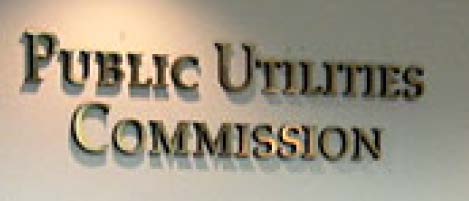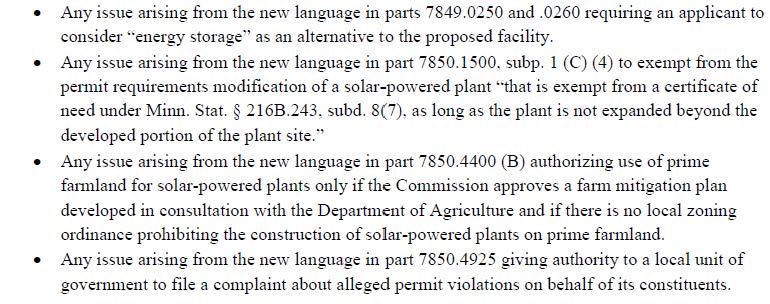Coal Ash rule gutting open for comment
March 8th, 2018
Coal ash, remember that big impoundment release, photo above, not all that long ago?
Good grief, it was a DECADE ago, and it’s still a mess. From the EPA page:
And another ash impoundment failure, our friends at Duke Energy, from EPA page:
EPA’s response to the Duke Energy coal ash spill in Eden, NC
It’s an issue in Minnesota too:
Who cares? Well, once a rule is proposed, there’s not much variation, because if there is, then it has to start all over again and go through this process. This is proposed to “amend” the 2015 final rule, so it can’t be good. Speak up NOW! Go to EPA’s Regulations.gov and make Comments under Docket ID No. EPA-HQ-OLEM-2017-0286 — open for 45 days after the proposed rule is published in the Federal Register, which is/was when? Figure it’s published NOW, and just do it.
From the EPA’s site, here’s the rule proposed to gut the 2015 final rule, because gutting regulation, that’s what this administration does:
And here’s the poop cut and pasted direct from the source:
Proposed Amendments to the National Regulations (Phase One)
On March 1, 2018, EPA Administrator, Scott Pruitt, signed the first of two rules that proposes to amend the April 2015 final rule. The proposal:
- Addresses provisions of the final rule that were remanded back to the Agency on June 14, 2016 by the U.S. Court of Appeals for the D.C. Circuit;
- Provides states with approved CCR permit programs (or EPA where it is the permitting authority) under the Water Infrastructure Improvements for the Nation (WIIN) Act the ability to set certain alternative performance standards; and
- Addresses one additional issue that has arisen since the April 2015 publication of the final rule.
EPA is proposing six provisions that would allow states or EPA the ability to incorporate flexibilities into their coal ash permit programs. These flexibilities would also be available to facilities with U.S. EPA-issued CCR permits.
Additionally, the proposal:
- Clarifies the type and magnitude of non-groundwater releases that would require a facility to comply with some or all of the corrective action procedures set forth in title 40 of the Code of Federal Regulations (CFR) in sections 257.96 through 257.98 in meeting their obligation to clean up the release.
- Adds boron to the list of constituents in Appendix IV of 40 CFR part 257 that trigger corrective action.
- Determines the requirement for proper height of woody and grassy vegetation for slope protection.
- Revises the current regulations to allow the use of CCR in the construction of final cover systems for CCR units closing pursuant to 40 CFR section 257.101 that are closing with waste-in-place.
- Adds a new paragraph to 40 CFR section 257.103 to allow facilities to qualify for the alternative closure provisions based on the continued need to manage non-CCR wastestreams in the unit.
EPA will be accepting written comments on this proposal through Regulations.gov under Docket ID No. EPA-HQ-OLEM-2017-0286 for 45 days after the proposed rule is published in the Federal Register.
Additionally, EPA will hold a hearing on this proposed rule. Additional information about the hearing will be posted in the docket for this proposal and on this website in the near future.
And more, cut and pasted from EPA:
Rulemaking Initial Comments – Minn. R. Ch. 7849 and 7850
May 12th, 2017

The Minnesota Public Utilities Commission rulemaking for Minn. R. Ch. 7849, Certificate of Need, and 7850, Routing and Siting, is slowly moving forward. Here are the final drafts up for review before they go to the Commission for a rubber stamp and release for general comment:
Final initial comments on drafts were due on Monday and here they are, in alphabetical order:
20175-131687-01_Goodhue Wind Truth – Marie McNamara
20175-131650-01-1_Great River Energy
20175-131683_ITC Comments and Attachments
20175-131686-01_NoCapX – U-CAN – NRG & GWT
Reply comments are due by 4:30 p.m. on May 31, 2017. eFiling is preferred! If you need to register to eFile, GO HERE! It’s easy, quick, and makes filing a breeze. Get to work — there’s a lot here to comment on!
Comments due – Minn. R. Ch. 7849 & 7850 Rulemaking
May 1st, 2017
 Comments on the Minn. R. Ch. 7849 and 7850 rulemaking are due next Monday! Are you making any progress? Info on who, what, where, why, when of filing comments is here:
Comments on the Minn. R. Ch. 7849 and 7850 rulemaking are due next Monday! Are you making any progress? Info on who, what, where, why, when of filing comments is here:
What to comment on? 
 Here are the latest draft rules:
Here are the latest draft rules:
Get to it!
Rulemaking Ch. 7829 at PUC tomorrow
November 18th, 2015
Tomorrow, the Chapter 7829 Rulemaking is going to the Commission, for approval of the FINAL rules. This rulemaking has been going on formally for over two years now in Docket 13-24 (go to NEW SEARCH and search for this docket).
Overland 7829 Comment Nov 18 2015
And some history… I’ve been concerned about this chapter for a long while, and submitted a Petition for Rulemaking over FOUR YEARS ago. Apparently that was filed in the trash:
And prior posts:
Ch. 7829 Rulemaking Comments July 20th, 2015
Stealth rulemaking — PUC’s Minn. R. Ch. 7829 July 10th, 2014
PUC’s Stealth 7829 Rulemaking Docket June 4th, 2013
PUC requests Comments on 7829 rules August 8th, 2013
Minn. R. 7829 marches on… September 9th, 2013
The rulemaking process — nothing changes…
September 13th, 2015
Many thanks to the “little birdie” who brought this decades old report to my attention:
Yes, this is a report from the Minnesota Legislative Auditor from 1993, and if you read it, you’ll see little has changed is so many years… The issues raised are issues we’ve been raising in the Public Utilities Commission rulemaking for Minn. R. Ch. 7849 and 7850 (Certificate of Need and Siting/Routing). AAAAAAAAAAAACK!
For example, from the Summary:
For example, in the PUC Rulemaking for 7849 and 7850 (PUC Docket 12-1246), it’s been an over two-year-long process, and few are showing up anymore. We weigh in, some things are taken into account in the drafts, and then that disappears from the next draft. How can it feel like anything but a colossal waste of time? Yet if we weren’t there, the utilities would get everything they want. And as with the utility Certificate of Need and Siting/Routing processes, rulemaking has the same notice and public participation problems. It’s all the same, deja vu all over again.
… and also from the report …
Does this sound familiar?
So what is the bottom line of this report?
Also, we recommend the following additional changes to the Administrative Procedure Act:
… and …
In addition to changing the APA and other statutes that govern agency rulemaking, we recommend that:


